I usually avoid going to my local AMC movie theater. Decades old, it has had a decaying lobby, saggy seats, and a rather worn-out feeling. Several weeks ago, though, as the only place with a good time to see Chef, I went there. And I was pleasantly surprised.
Fully reclining and really wide, my seats were a pleasure! This is what they looked like:
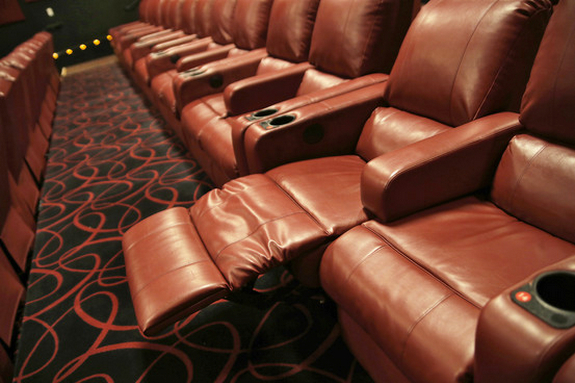
The second largest movie chain in the US, AMC has decided that the way to reverse declining demand is with reclining seats. Because the reclining seats are massive, their installation requires eliminating up to two-thirds of an auditorium’s seating capacity. Even with the cost at $350,000 to $500,000 per renovation, AMC has decided that “less is more.”
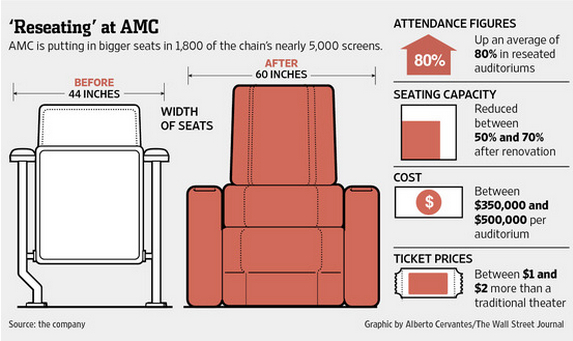
With entertainment alternatives multiplying, the problem for movie theaters has been other sources of demand. We are staying home to watch Netflix and have no need to go to the movies when we leave home.
However, the “reseated” theaters seem to be changing our demand. They attract more adults, a mid-week audience, and for me, are a comfy way to watch a movie that is better than my couch. During the “seeding” times, at the 37 AMC theaters that have been “reseated,” box office revenue spiked by 60% and attendance, by 80%.
Analysts expect AMC to increase ticket prices at reseated auditoriums by $1. The average now is $8.13. Obviously, AMC does not expect that buyers’ demand will become elastic at a $14.00 ticket price.
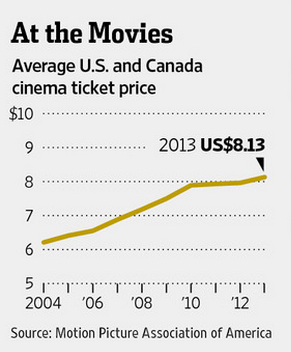
The company notes that only venues with attendance problems will enjoy the renovation. Most NYC theaters, for example, fully utilize their seating capacity. If AMC were to install recliners and eliminate two-thirds of all seats in NYC, their revenue would sink.
Our bottom line: Supply and demand are affected by reclining seats at movie theaters. On the supply side, because wider movie seats increase a firm’s expense, the impact should be a decrease in supply. Meanwhile though, for the demand side, there is an increase in the number of movie tickets people are willing and able to buy. The result? Less supply, more demand and more expensive tickets.
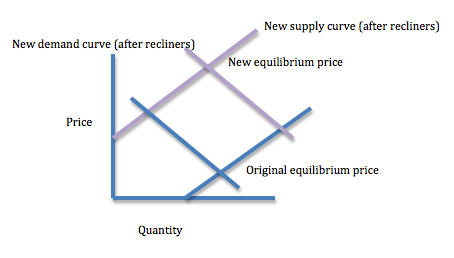
The Reason I Will Return to My Local Movie Theater
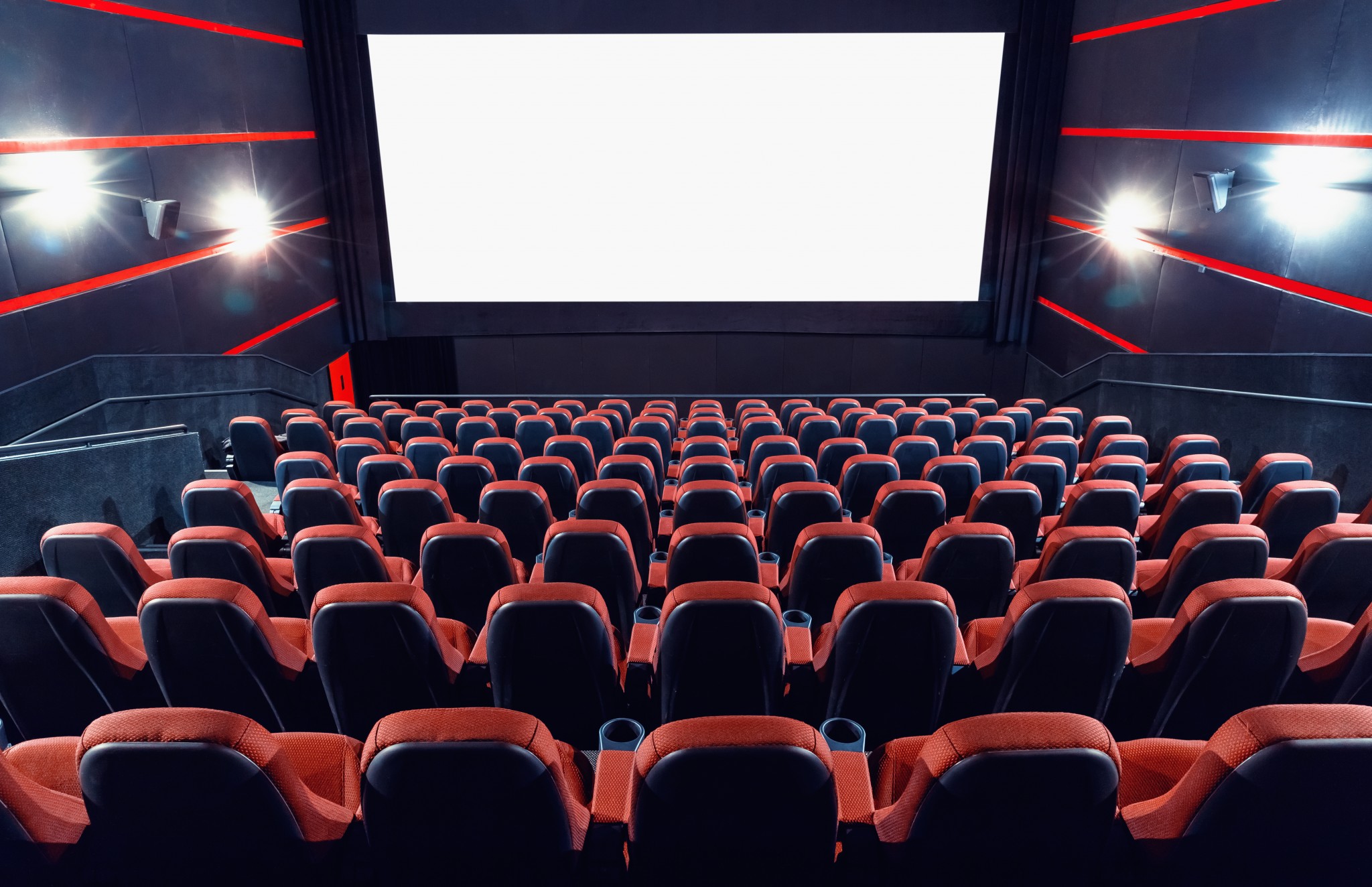
Elaine Schwartz
Elaine Schwartz has spent her career sharing the interesting side of economics. At the Kent Place School in Summit New Jersey, she was honored with an Endowed Chair in Economics. Just published, her newest book, Degree in a Book: Economics (Arcturus 2023), gives readers a lighthearted look at what definitely is not “the dismal science.” She has also written and updated Econ 101 ½ (Avon Books/Harper Collins 1995) and Economics: Our American Economy (Addison Wesley 1994). In addition, Elaine has articles in the Encyclopedia of New Jersey (Rutgers University Press) and was a featured teacher in the Annenberg/CPB video project “The Economics Classroom.” Beyond the classroom, she has presented Econ 101 ½ talks and led workshops for the Foundation for Teaching Economics, the National Council on Economic Education and for the Concord Coalition. Online for more than a decade. econlife has had one million+ visits.





